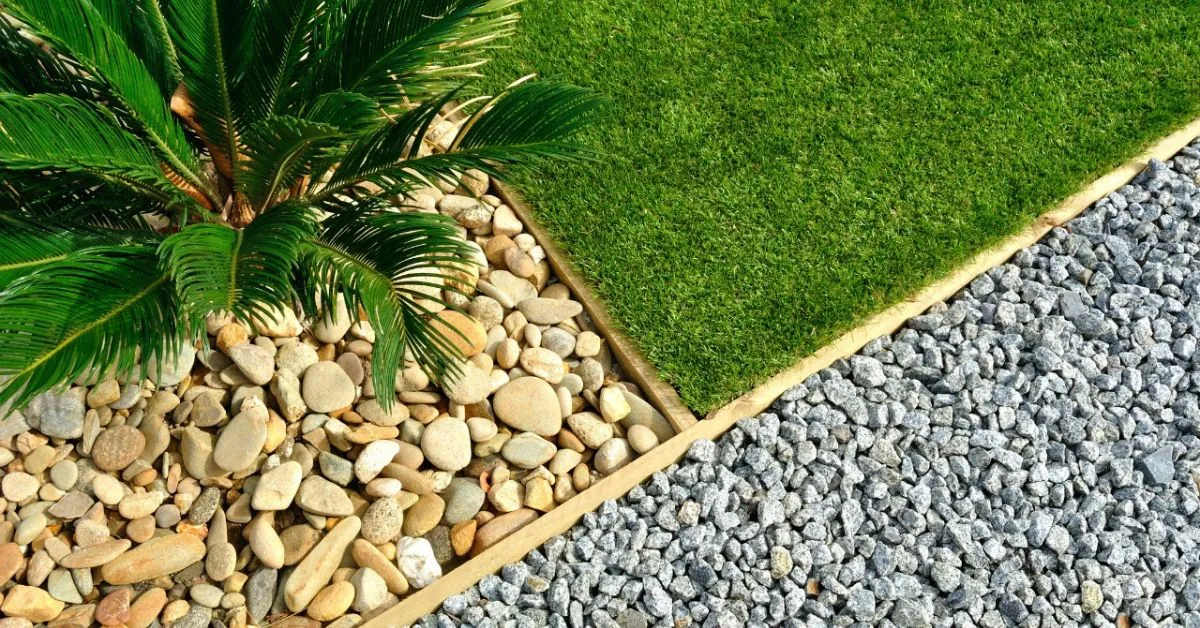Landscape Stone Enhancing Outdoor Spaces
Landscaping is more than just putting trees and bushes; it’s also about making outdoor spaces look nice. Landscape stone is an important part of modern landscape planning because it looks good for a long time and can be used in many ways. Landscape stone is great for both homes and landscape lovers because it can improve the look of your home’s exterior and make outdoor living areas that are useful.
Benefits of Using Landscape Stone
One of the main reasons people choose landscape stone is that it looks nice. Stone adds a touch of natural beauty to any outdoor space, whether it’s the rough charm of gravel paths or the elegant simplicity of flagstone walkways. Landscape stone is also respected for being strong and long-lasting. Wood and other organic materials tend to rot and decay over time, but stone features can stand up to the weather and keep their beauty for years to come. Landscape stone also doesn’t need much upkeep, which makes it a good choice for busy homes. Stone surfaces can stay spotless with little work if they are cleaned regularly and sealed every once in a while.
Types of Landscape Stone
There are so many choices when it comes to outdoor stone. A lot of people choose gravel for their walks and paths because it has a rough look but is still useful and drains well. River rock gives flower beds and water features depth and visual interest, making the area feel calm and natural. Flagstone is great for making patios, stepping stones, and pool decks because its surface is flat and smooth. In big settings, boulders make dramatic focus points that give the place a sense of grandeur and size.
Factors to Consider When Choosing Landscape Stone
A lot of things need to be carefully thought through in order to choose the right type of landscape stone. When it comes to what kinds of stone can be used, climate and weather factors are very important. In wet areas, porous stones like limestone may be more likely to wear away, while granite and slate are better at handling water. Also, think about what the stone feature is for and how it works. Will it be used in places with a lot of foot traffic, like walkways, or will it just be there to look nice? Lastly, your budget may affect the type of stone you choose, since some types may cost more than others.
Design Ideas and Inspirations with Landscape Stone
Landscape stone is very flexible, so it can be used in a lot of different ways. Using gravel or concrete, you can make paths and walks that look nice and make it easy for people to move around your yard. You can outline garden beds and steep slopes with retaining walls, which will give your scenery more depth and visual interest. To make a clean, finished look, use stone edges to separate growing areas. Use natural stone to make water features like ponds, waterfalls, and pools that look like they belong in nature.
Installation and Maintenance Tips
For landscaping stone features to last as long as possible and look their best, they need to be installed and cared for correctly. First, make a strong base for the stone that will allow water to drain and stay in place. Put garden cloth under the stones to stop weeds from growing and cut down on the amount of work that needs to be done. Cleaning the stone with water and a light soap on a regular basis will help get rid of dirt and other waste, and protecting it every so often will protect it from spots and damage from water.
Eco-Friendly Aspects of Landscape Stone
Landscape stone is good for the environment in addition to looking good and being useful. Due to its natural state, stone is naturally long-lasting and good for the environment. Because it is permeable, rainwater can soak into the ground, stopping flow and damage. Many stone sellers also use safe buying methods to make sure that the process of getting stones and making them has as little effect on the earth as possible. When you work outside, landscape stone is a great choice for making beautiful, long-lasting settings that fit in with nature.
Conclusion
Landscape stone can be used in many ways and will always look good in any outdoor area. It looks good, lasts a long time, and doesn’t need much upkeep, so it’s a popular choice among homes and garden designers. Landscape stone can be used in a lot of different ways to improve your landscaping, whether you’re making a peaceful garden escape or a useful outdoor living area.
FAQs
Is landscape stone suitable for all climates?
Different types of landscaping stone may work better in different areas, but there are choices for all kinds of weather. It’s important to pick stone types that will do well in your area’s temperature.
How can I prevent weeds from growing between the stones?
Weeds can be stopped from growing by putting garden fabric under the stones and doing regular care like pulling weeds as you see them. Adding a layer of grass or dirt between the stones can also help keep the soil moist and stop weeds from growing.
Can I install landscape stone myself, or do I need professional help?
How hard the work is will depend on how big the job is and how much experience you have. You might be able to do simple projects like making a garden fence or a small path by yourself, but bigger jobs like putting in a patio or retaining wall might need professional help. Before starting any outdoor stone job, it’s important to learn the right way to place the stones and how to keep everyone safe.
How often should I clean and seal my landscape stone?
How often you clean and seal will rely on things like how much foot traffic there is and how much weather there is. For the best defense, outdoor stone should be cleaned and sealed once a year. But areas with a lot of foot traffic might need care more often, while areas with less foot traffic might need cleaning and closing less often.
Is landscape stone environmentally friendly?
Yes, landscape stone is thought to be good for the earth because it comes from natural sources and many sellers use eco-friendly methods to get their stones. Homeowners can make their landscaping projects less harmful to the environment by using stone that comes from nearby sources and installing and maintaining their projects in an eco-friendly way.






